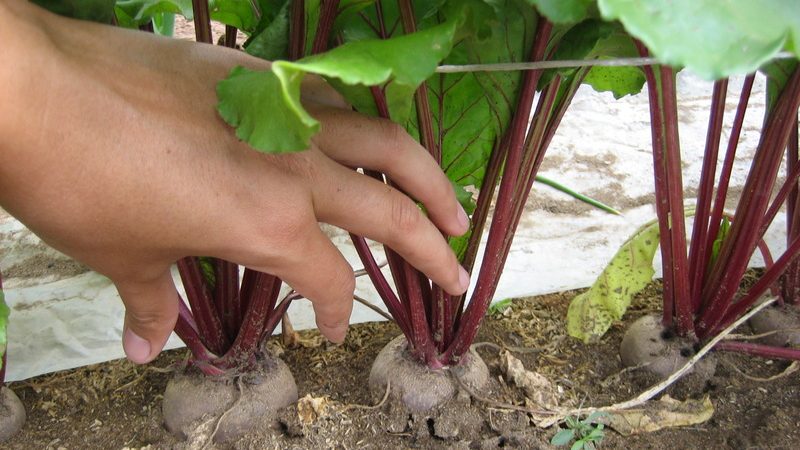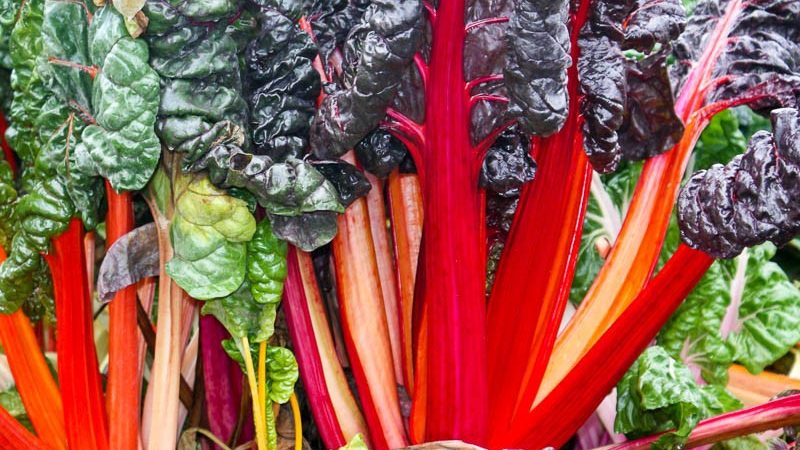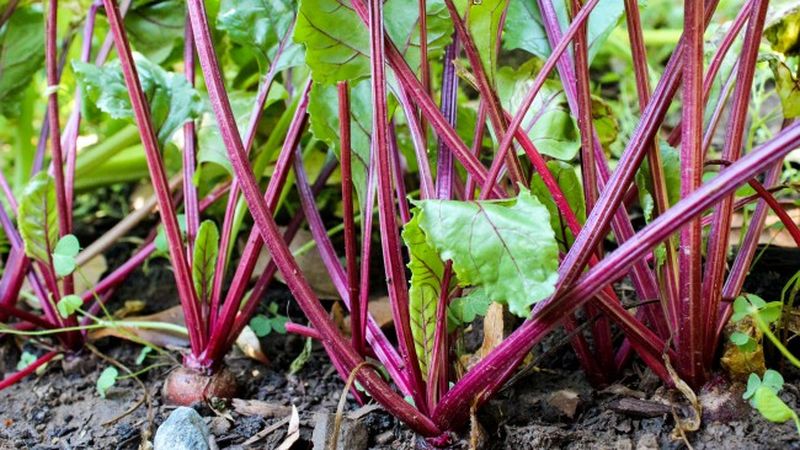Is it necessary and possible to pick off the leaves of beets during growth: consider the feasibility and learn how to do it
Beetroot is a common and unpretentious root vegetable, rich in vitamins and minerals. It came to us from the southern part of the Persian Gulf, therefore, when growing it, warmth, optimal humidity and fertile soil are important. In the home vegetable economy, two varieties of beet are common: root and leaf.
In personal plots, it is preferable to grow varieties with a long shelf life. An equally important part of beets is their tops. In the article, we will consider what value beet leaves are, can and should be removed, and how to do it correctly.
The content of the article
Do I need to pick leaves from beets
Many budding amateur vegetable growers have heard that when the leaves of vegetables are cut off, the root crop will grow larger. However, the size of the beet depends on many factors, and to the least extent on the amount of tops.
Other indicators are of paramount importance: varietal characteristics, soil quality, fertilization, timely watering, degree of illumination, etc.
Points for and against
Keep in mind that the root vegetable receives nutrients not only from the soil, but also through the leaves, so excessive pruning can degrade the quality of the fruit. With insufficient development of the deciduous part, the root crop may lose its taste. It also leads to unnecessary trauma to the plant, and stress is known to negatively affect growth.
reference... Beet leaf variety Chard grown to use its leaves as food.
Since the deciduous part of ordinary root beets is important for the growth of the fruit, you should carefully consider planting the plant and take into account the factors favorable for it, which will help to grow a tasty and healthy vegetable.

A few basic rules:
- It is not necessary to plant seedlings too densely, a distance of 10-15 cm is quite optimal.
- It is best to plant plants along the edge of other beds, such as cabbage, cucumbers, onions or tomatoes. Do not plant it after carrots or next to legumes.
- Pay attention to the soil for planting beets in the fall, it should not be sour, otherwise the roots will be tasteless and tough. Sandy loam and light loamy soils are most suitable. If the soil is too heavy, dilute it with river sand.
- A prerequisite is warmth. If the seedlings fall under frost or just cool temperatures, the plant will go into bloom and there will be no harvest.
- When transplanting plants into the ground, you do not need to shorten the root of the root, because it germinates deep enough to provide the young plant with moisture for the first time.
- Beets need to ensure uniform watering, without stagnant water.
- It is enough to feed the plant with compost and be sure to mulch.
- It is useful to water the plants with ash or boric acid diluted in water.
When is it necessary to break off / cut the tops
There are several situations in which the leaves of beets can be cut off, in other cases this is not necessary:
- Some leaves are infested with pests... Severely affected leaves can be carefully trimmed. But, in addition to this, the plant will have to be treated with a pest repellent. For example, spraying with a salt solution will help against a spring fly.
- Transplanting... Beets are planted with seedlings or immediately sown seeds in the ground. After sprouting, thinning is done by cutting off excess plants.
- Mosaic of leaves. Viral disease, in which the affected plants and their parts must be removed.
- Eating. Beet tops can be used to make borscht and salads. To do this, use the extreme leaves, if there are many of them.
- Harvest. During the harvesting of the beets and preparing them for storage, the tops are cut off.
- Animal feed. Some vegetable growers use the tops to feed animals, especially if they are large and fleshy. In this case, do not get carried away with pruning - leave at least 6-7 leaves per root crop.
Why is it needed
Above, options for cutting the leaves of beets in special cases were considered. But there are times when this must be done, for example, for a leafy beet variety.
Mangold is a leafy beet that does not form a root vegetable, while producing a lot of leaves suitable for eating, making soups or salads. This variety of beets grows quickly, so the outer leaves must be cut off constantly, otherwise the plant will bloom. Mangold is also called "Roman cabbage".

The greens of this beet are rich in vitamins and far exceed the benefits of regular table beets. Chard can be leaf and petiole. There is a wide variety of varieties of this variety on the market. They all differ in leaf color: from white to crimson, as well as in the thickness and shape of the leaves.
The leaves of Mangold are beautiful: shiny, they are smooth or with tubercles, with bright contrasting veins against the background of the leaves. The petiolate chard is larger than the leaf one. Its leaves are gigantic, wavy.
When to do it
Since the leaves are trimmed as needed, this can be done at any time.... Especially when it comes to pests or diseases. If we talk about thinning seedlings, then if the plant was carefully removed from the ground, it can be planted on an additionally prepared bed.
In cases where the leaves are needed for food, the plants are pruned evenly so as not to harm the root crop. Beets are pruned regularly as the tops grow.
Permitted and prohibited periods
Do not pick off the leaves when the plant is young and only gaining growth, from about May to June. In subsequent periods, it is possible to use the leaves for cooking. Beet tops are often used to feed animals.
This is possible if the tops are strong enough and there are a lot of them. The safest period will be the time when the root crop has already gained the bulk and reached a size of up to five centimeters.
Reference. Removing the foliage earlier can negatively affect the growth of the root crop.
Is it possible to prune the leaves during growth
If there is an urgent need to cut the tops of beets, then during the growth period it is possible. But it is necessary to properly remove the leafy part in order to cause the plants as little harm as possible.
Correct haulm removal - step by step instructions

It is easy to remove damaged leaves from beets, this will require:
- scissors or garden shears;
- gloves;
- disinfectant for instruments;
- activated carbon (optional).
Operating procedure:
- Treat the instrument with any disinfectant, wipe it with a clean cloth, or simply dry it.
- Examine the plant carefully and determine which leaves need to be cut.
- Gently bring the tool, grabbing the leaf at the very base, and cut off the stem with a sharp motion. It is important that the tool is sharp and does not leave any ragged edges.
- Put the cut off leaf, especially when pruning leaves damaged by pests, immediately put it in a separate container to avoid the spread of pests to other plants.
- If the sheet was large, the cut site can be sprinkled with crushed activated carbon.
Removing leaves for storage for the winter
The crop is harvested when the roots reach 5-6 cm in diameter. It is not worth keeping the plants in the ground for a long time, since the overgrown plant will lose its taste and will fit only for livestock feed. And sudden autumn frosts can completely ruin the harvest.
In the process of harvesting beets for winter storage for the cellar, it is important to take into account several simple rules that will help preserve the root crop until spring.
When harvesting, the beets are carefully removed from the soil, being careful not to damage the root crop. The deciduous part is cut off, leaving the stems 2-3 cm long. The root remains unchanged. In this form, beets will be well preserved in the cellar almost until summer. You cannot leave it in the soil for the winter.
Attention! It is more convenient to store beets in the cellar in boxes with sand, so they will not grow moldy and will be better preserved.
Tips and tricks from experienced summer residents

Growing beets is a simple matter, but it also has its own characteristics.
There is no need to feed the beets with nitrogen fertilizers, in this case nitrates will accumulate in the root crop. In this case, the fruits will grow small, and the tops, on the contrary, will be large. An excess of nitrogen can be seen in the cut of the fruit in the form of white circles, and also determined by the red color of the foliage. It is better not to use such beets for food.
As mentioned, beets do not like acidic soils, so you cannot fertilize them with manure. Exceptions are cases when there is slow growth of leaves or small foliage. In this case, it is worth making a single feeding with infusion of weeds or manure.
It is important to select plant varieties in accordance with the growing region:
- Suitable varieties for the Moscow region: Red ball, Vodan F1, Eclipse, Ataman.
- Varieties for the Urals: Bikores, Valenta, Bon-Bon F1.
- For Siberia: Siberian Flat, Podzimnyaya, Red Ice, Red Bogatyr, Mashenka.
Conclusion
Now you know if you can pick off the leaves of beets during growth and how to prune them for storing crops in winter.
The use of beet tops for food is good for your health. This is the only reason to prune the leaves from a healthy plant. Do not forget to do everything carefully in order to enjoy a rich harvest of beets in the fall.